This is my third in a series of columns about City Cars, the possible future of American motoring if Washington and the Greenies – and perhaps common sense — have their way. Actually, there is a reasonable alternative view to “Greenness” about the future need for City Cars, and I’ll get to that in a future column when I report on a new Honda Hybrid, wrapping up the series.
First, let’s discuss the Nissan Leaf, the first high production-mainstream BEV (Battery Electric Vehicle) or PEV (of necessity, Plug-in Electric Vehicle) to enter the U.S. market since GM’s EV-1 of 1996-99. And remember that the limited production EV-1 was not sold, but rather leased and even then only in California and Arizona. The other two types of electric vehicles are the PHEV (Plug-in Hybrid) such as the Chevy Volt, powered by both electricity and an internal combustion engine but with the ability to recharge the battery from the grid; and the HEV (Hybrid) also powered by both gas and juice, typified by the original Honda Insight, the highly successful Toyota Prius and Ford’s Escape Hybrid SUV.
The Nissan Leaf is a driver’s delight: smooth, quiet, well-appointed, relatively functional with seating for five, and highly equipped yet with an attractive sticker price as tested of “merely” $34,000. The price includes Navigation system, fancy entertainment center and automatic temperature control as well as most of the usual comfort and convenience features of today’s upscale models.
Initially I thought the Leaf was mounted in an unfamiliar Renault four-door body (Nissan is joined at the head with Renault)—it does not look like other sedans on American roads, and its controls, such as for releasing the parking brake, were a bit of a mystery like some French cars I’ve encountered. But, it turns out, Nissan’s intent was to have a distinctive-looking BEV, a bold statement like Toyota’s unique-looking Prius and Chevy’s Volt, and unlike, say, Ford’s and Honda’s hybrids (except for Insight and CR-Z) which except for badging are hard to distinguish from their conventionally powered brethren.
As fine a set of wheels as the Leaf represents, though, it is handicapped and likely will be confined to a limited-volume niche market because of justifiable “range anxiety.”
(Check out Mike Davis’ review of the Chevrolet Volt and the Fiat 500.)
Let me give you the first example from my own experience. The week I had the Leaf for evaluation, I also had scheduled a presentation on my latest book, The St. Clair River, in 55-mile-distant Port Huron, Michigan. There simply was no way I could take the Leaf on the 110-mile trip without spending overnight there just for recharging. And that’s assuming there were relatively accessible charging stations, which in most of the country are still rare.
(An aside about this latest book of mine: “The St. Clair River” is my first non-automotive book in a dozen years, though it includes references to a couple of little-known auto manufacturers alongside the river. Mostly it’s about Great Lakes shipping and the communities along the River–more properly a Strait–connecting Lakes Huron and St. Clair, and separating Michigan from Ontario.)
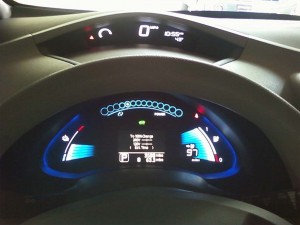
The high-tech gauge display on the Nissan Leaf makes it easy to track such things as state of charge.
Nissan expects that most Leaf buyers will acquire their own residential charging stations, or work for employers who supply them, so that the cars’ motive batteries can be recharged while the vehicles are otherwise idle. Further, these charging stations in the main will offer 220-volt charging. Ordinary household 110V outlets, such as the one I used to recharge my test Leaf, are considered mere “trickle chargers.”
But people can build their vehicle-using lives around the range limitations of a “juicer” like the Leaf, as long as it lives in a flexible, multi-car family, and in a mild climate devoid of hill-climbing. You just have to use the other car, as my wife and I did for our jaunt to Port Huron.
This takes us to what I next experienced as the biggest challenge to broad acceptability of BEVs. Including the Leaf, BEVs are Fair Weather Friends. One morning I set off in the Leaf on a couple of errands, to be followed by a medical appointment some 10-15 miles distant, depending on route. But the ambient temperature was in the low 30s (F) so I flicked on the heater/defroster. Uh-Oh, the “mileage remaining” on the battery dropped instantly from 40 to the 20s and by the time I reached my furthest destination, to just 16.
Now getting home to the charger became an issue. (P.S., I made it with a couple of miles to spare, while certainly experiencing the anxiety—you can’t just borrow a can of electricity somewhere to keep going.)
In our new world of electric vehicles, according to Nissan,“quick charge” 440V stations will become available, but at this time, there still are none in Southeast Michigan. And even “quick” may mean a couple of hours, depending on how far you have to travel to your home charger.
High ambient temperatures, inviting use of the air-conditioning, also may drain the operating battery of a BEV; and, as suggested, so does hill-climbing. Yes, the battery charges in coasting down and braking, but does the process even-out? Hard to know. A few years ago, when my son left his Escape Hybrid with my daughter in New York’s Finger Lakes region while he deployed to Iraq, she reported that the Hybrid’s fuel economy was less operating in the hilly area there than in their non-Hybrid four-cylinder Escape with manual transmission. In other words, the Hybrid shines in urban traffic but may lose its edge in the hills. There aren’t any hills around Detroit where I drove the Leaf BEV, so I never had a chance to test the proposition.
Nevertheless, a BEV like the Leaf is a viable alternative as a City Car for those whose driving life style fits, or who are willing to change that life style so it will fit. That life style includes, as noted, the BEV not being the sole means of personal transportation. It also suggests a short-distance routine operation of commuting and parking, say under 50 miles a day roundtrip.
And considering the prices of many cars being snapped up in the market these days, the Leaf’s mid-30s price doesn’t even seem excessive, considering all the goodies included. I don’t include government EV tax rebates in this, because to me those essentially are subsidies for the affluent who do not need or deserve them. Let them be pathfinders, as it were, on their own bucks, not on those of the taxpayers.

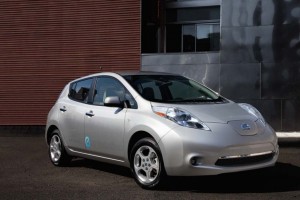
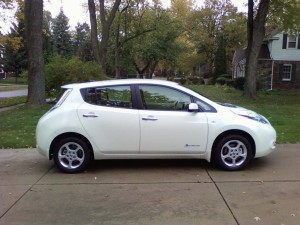
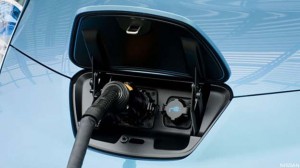
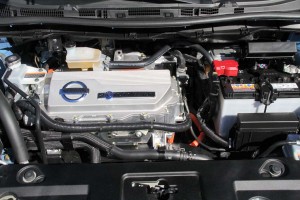
Imagine owning a Leaf as your only vehicle during the recent power outages in Connecticut, etc. That would have been fun-not!
Sadly, Randy, I agree. (Oh, not sad we agree…though we often don’t…LOL.)
See my story, a few months back, on how we were down for four days at TDB Global HQ (otherwise known as Casa Eisenstein). A neighbor who was very interested in battery cars changed his mind after that event. That said, a number of folks I have spoken to insist they can work around such problems and it appears most own multiple cars in the household. But until there’s a better grid…and HIGH-speed public charging becomes widely available…I think this underscores the challenges of taking battery cars to the mainstream.
Paul A. Eisenstein
Publisher, TheDetroitBureau.com